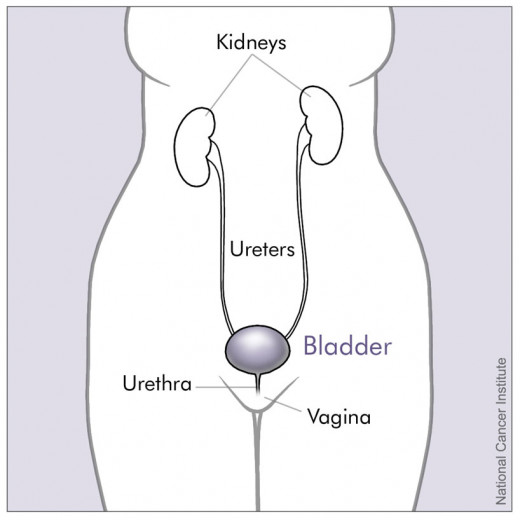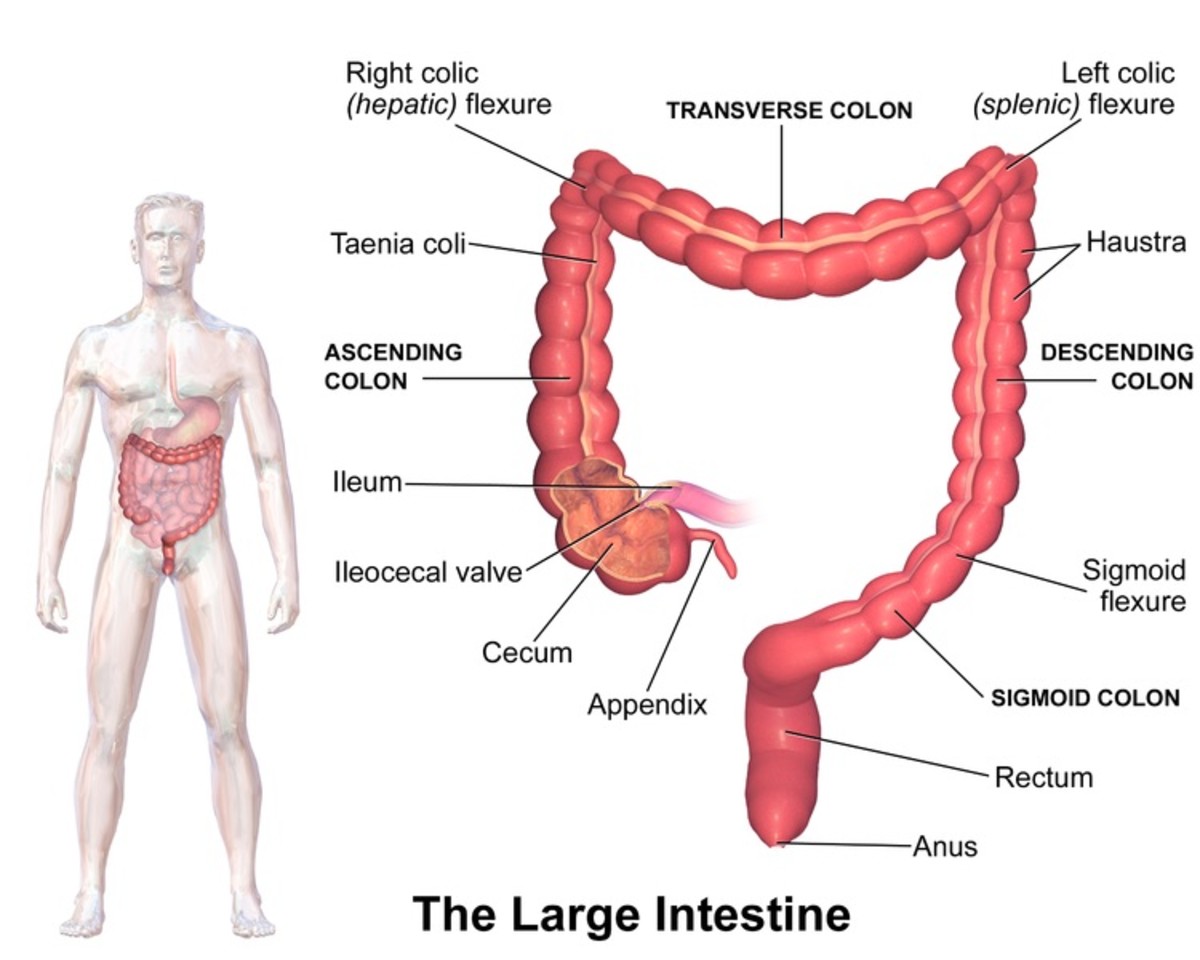Discussing Urinary Health With Your Teenage Daughter
Sex Ed
Did your sex ed class discuss the importance of urinary health in detail?

Basic Anatomy & Physiology of the Urinary Tract
The Urinary system is divided into two sections, the upper urinary tract and the lower urinary tract. The primary organs of the upper urinary tract are the kidneys and ureters while the primary organs of the lower urinary tract are the bladder and urethra.
The kidneys are bean shaped and sit laterally on either side of the spine along the back wall of the upper abdominal cavity. An average adult kidney is about 4-5 inches in length. The primary function of the kidneys is to filter waste out of the body's blood supply (pumped to the kidneys via the renal artery). This is accomplished by the individual nephrons (approximately one million per kidney) located within the kidneys that separate the waste from the blood supply and bind the waste to water molecules (urine).
Urine that is ready to leave the body flows into triangle shaped structures within the kidneys called renal pyramids, then exits through the minor calyx. The minor calyx is a funnel shaped structure that collects urine from the kidneys and leads the urine down to the renal pelvis. The renal pelvis is a large funnel by which urine exits the kidneys and enters the ureters.
The ureter begins at the renal pelvis and transports urine to the urinary bladder. The urinary bladder is a hollow organ whose sole function is to hold urine. To continue its path out of the body urine must drain through the urethra, a tube that begins at the floor of the urinary bladder. Urine is sterile when it leaves the kidneys and enters the ureter and bladder, but as it passes through the urethra it picks up resident flora (regular healthy bacteria, usually lactobacilli) and exits out of the urinary meatus.
Female urethras are located between the clitoris and the vaginal opening, and are only around 1.5 inches in length (while male urethras are approximately 8 inches long); they are also within close proximity to the anus, making them more vulnerable to collecting bacteria such as Escherichia coli (e.coli).
UTI Healing Manual
Urinary Tract Infections
The urinary tract maintains good health in two ways: peristalsis (the constant movement of urine) throughout the tract flushes out unwanted bacteria and microbes, as well as the urinary tract sustains a pH that is unfavorable for nonhemolytic streptococci, corynebacterium, and staphylococci; bacteria which would otherwise grow out of control and cause problematic infections (gram-positive Staphylococcus saprophyticus is one of the most common UTI causing pathogens in women).
Urine is sterile as it leaves the kidneys and flows into the ureter and the bladder, but once it exits the urethra it picks up resident flora, but sometimes when pathogenic bacteria aren't successfully flushed out of the body they can creep up into the urethra and potentially cause an infection.
There are two types of UTIs, ones that affect the upper urinary tract (the kidneys and/or ureters) and the ones that affect the lower urinary tract (the bladder and/or urethra).Upper UTIs can only be distinguished from lower UTIs when a urine sample is examined through urinary catheterization; this is because the urine flow isn't passing through the lower urinary tract, which would contaminate the urine sample. Lower UTIs are more common than upper UTIs, but are easily treatable. If you suspect a lower UTI you should seek medical attention within 48 hours of the onset of the symptoms because if a lower UTI travels upward towards the kidneys it can cause severe, even fatal, illness that requires hospitalization.
Lower UTIs vs. Upper UTIs
Type of Infection
| Symptoms
| Prevention Techniques
| Treatment Options
|
|---|---|---|---|
Lower UTI: Acute lower UTI, Urethritis (urethral infection), Cystitis (bladder infection)
| dysuria (pain when passing urine); an increased frequency for urination; cloudy urine from the presence of pus & bacteria
| Urination after sex, increased fluid intake
| Uncomplicated UTIs generally respond well to regular antibiotics, but it's important to consult your physician once you begin to notice symptoms.
|
Upper UTI: Pyelonephritis (kidney infection)
| back pain, fever, and lower UTI symptoms
| When left untreated a lower UTI can turn into a life threatening kidney infection, so if you display any symptoms of a lower UTI go to your doctor and get it treated immediately.
| Pyelonephritis must be treated aggressively with broad-spectrum antibiotics that are administered intravenously.
|
Below you'll find a link you can click if you're interested in trying different home-based remedies for treating the symptoms of a lower UTI.
- Discovery Health "7 Home Remedies for Urinary Tract Infections"
Learn about the home remedies you can try to prevent or remedy a urinary tract infections, in which bacteria take control of your bladder and urethra.
Sexual Health
Females have a higher risk of acquiring any kind of urinary tract disease or infection because anatomically they have shorter urethras and more bacteria can be found around the vagina. It is particularly important for sexually active females to protect and care for their bodies by knowing what to do to before and after sex. Here are a couple techniques that can be applied to protect those sensitive areas:
1. Have both parties wash their hands (and/or other participating body parts) before engaging in sexual activity. This will limit the introduction of harmful bacteria into the vaginal cavity.
2. Urinate after sexual activity; this will flush the majority of microbes that have been introduced into the urinary tract.
Do you think urinary health should be a primary topic for public sexual education?
Review Quiz
view quiz statistics- File:Vulva labeled english.jpg - Wikimedia Commons
This link will take you to a labeled picture of a vagina on Wikimedia commons. It is meant for educational purposes only.
References
1. Price, P., Frey, K. "Urinary Tract." Microbiology for Surgical Technologists, pgs. 284-291 (2003)
2. Frey, R. "Urinary System." The Gale Encyclopedia of Health 3rd Edition, pgs. 3441-3444 (2013)
3. Haggerty, M. "Nephritis." Gale Encyclopedia of Medicine, . Ed. Laurie J. Fundukian. Vol. 4. 4th ed. Detroit: Gale (2011)
4.Durani, Yamini, MD. " http://kidshealth.org/kid/htbw/kidneys.html# "
5. " http://kidney.niddk.nih.gov/kudiseases/pubs/uti_ez/#11 " NIH Publication No. 12–4807 (9/9/2013)









